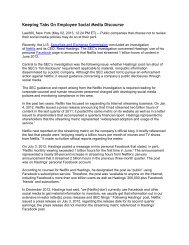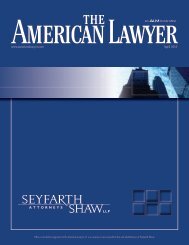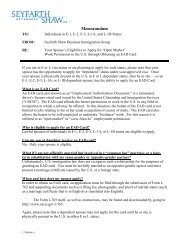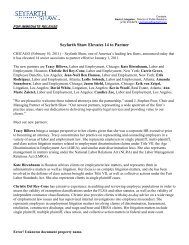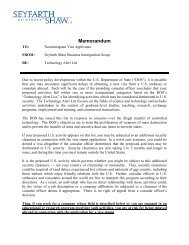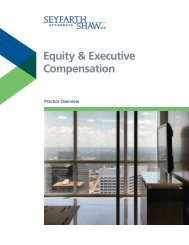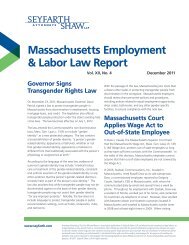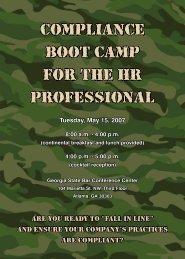Litigating California Wage & Hour and Labor Code Class Actions
Litigating California Wage & Hour and Labor Code Class Actions
Litigating California Wage & Hour and Labor Code Class Actions
You also want an ePaper? Increase the reach of your titles
YUMPU automatically turns print PDFs into web optimized ePapers that Google loves.
plaintiff’s attorney <strong>and</strong> putative class members before a court certifies a class. 495 Despite<br />
this fact, an employer does not have carte blanche to communicate with putative class<br />
members any way it desires. Rather, courts are empowered to limit such communications<br />
where the employer engages in conduct that has been coercive or misleading.<br />
One area where there is great potential for an employer to be accused of coercive conduct<br />
in its communications is where the employer attempts to settle a case directly with<br />
individual employees who are within a putative class in an ongoing class action. Because<br />
current employees may fear for their jobs or future career prospects if they do not<br />
cooperate with the employer, there is at least the potential for coercion when an employer<br />
tries to settle individually. At the same time, an employer may seek to resolve a case on<br />
fair terms in situations where a plaintiff’s counsel has staked out an overly aggressive<br />
position on class settlement. The law must strike a balance between promoting genuine<br />
settlement efforts <strong>and</strong> employee coercion.<br />
The proper steps that an employer should take to ensure that their settlement efforts are<br />
seen as non-coercive were discussed in In re M.L. Stern Overtime Litigation. 496 Among the<br />
steps the court suggested an employer should undertake to ensure its settlements will be<br />
enforceable include:<br />
<br />
<br />
<br />
<br />
Preparing a h<strong>and</strong>out that explains the case in neutral terms, <strong>and</strong> is up front about<br />
the fact that the employee may be able to obtain more money than the settlement<br />
offered by pursuing the class action.<br />
Providing each employee with a copy of the operative class action complaint <strong>and</strong><br />
letting putative class members know that they are free to contact plaintiffs’ counsel<br />
to discuss the case if they so desire.<br />
Reassuring employees that they have the right to participate in the class action<br />
rather than agree to the settlement, <strong>and</strong> that they will suffer no retaliation if they<br />
choose to participate in the class action.<br />
If a settlement agreement is offered to the employee, the employee should be<br />
given a reasonable period of time (several weeks) to consider the offer <strong>and</strong> discuss<br />
it with counsel of their choice. 497<br />
495<br />
496<br />
497<br />
Atari v. Superior Court, 166 Cal. App. 3d 867 (1985); see also Ochoa-Hern<strong>and</strong>ez v. Cjaders Foods, Inc., 2010 WL<br />
1340777 (N.D. Cal. April 2, 2010) (denying plaintiff’s motion for a protective order seeking to prohibit defense attorneys<br />
from interviewing “aggrieved employees” in connection with a PAGA claim, finding that no attorney-client relationship<br />
existed between plaintiff’s counsel <strong>and</strong> those employees).<br />
250 F.R.D. 492 (S.D. Cal. 2008).<br />
Id. at 498-500.<br />
Seyfarth Shaw LLP | www.seyfarth.com <strong>Litigating</strong> <strong>California</strong> <strong>Wage</strong> & <strong>Hour</strong> <strong>Class</strong> <strong>Actions</strong> (12th Edition) 111



